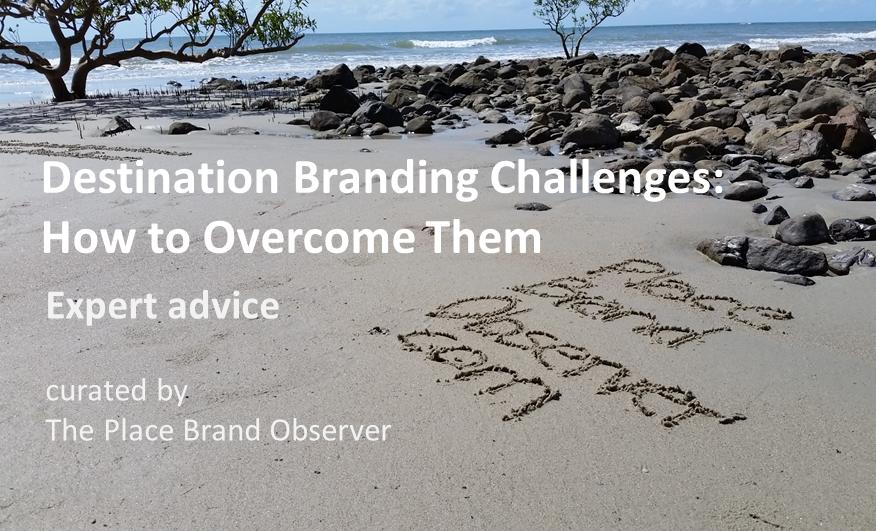Following our interview with DMAI president Michael Gehrisch last week, today’s post is all about destination branding challenges – and how to overcome them. As interest in destination branding is on the rise, those engaging with it often find themselves confronted with unexpected hurdles and challenges.
From our interviews with place branding thinkers, shakers and doers, here are some useful tips, and handy advice from place brand experts: valuable insights into the main destination branding challenges, the must do’s and don’ts.
Which are the key destination branding challenges today?
Roger Pride, Heavenly Consultants:
 I think there are three main challenges. Firstly, creating the environment and organisational structures within a place which allow the brand strategy to influence the way in which a place operates.
I think there are three main challenges. Firstly, creating the environment and organisational structures within a place which allow the brand strategy to influence the way in which a place operates.
Secondly, the need to build a consensus which allows the place to communicate in a fresh, bold and imaginative way. Too many places rely on lame clichés and generic messages which do not truly reflect the personality of a place.
And thirdly, the need to create messaging which is equally effective across a wide range of different audiences.
To help achieve this, I created a framework and brand architecture model – the Unique Place Proposition. This model identifies the elements of a brand which remain constant and those which flex depending on the sector.
Our mantra is consistency without compromise. If consistency results in a vanilla, safe approach then it will fail. The challenge is to keep messaging impactful, fresh and relevant.
Read our interview with Roger Pride to learn more about tourism marketing, nation- and destination branding for Wales. For more about Heavenly consulting, visit www.weareheavenly.com.
Which are the do’s and don’ts in place branding?
Tom Buncle, Yellow Railroad Consulting:
 The first destination branding challenge is a sine-qua-non: quite simply, understanding the need to define your brand and use it to your competitive advantage. Otherwise the destination will be no more than a ‘me-too’ place, selling the same products as everywhere else.
The first destination branding challenge is a sine-qua-non: quite simply, understanding the need to define your brand and use it to your competitive advantage. Otherwise the destination will be no more than a ‘me-too’ place, selling the same products as everywhere else.
We all know this tends to lead to competing on price rather than quality – a dangerous downward spiral, which depletes the ability to re-invest in quality and ultimately results in destination decline.
Working across all sectors in a place, rather than just a destination, takes time, patience, shoe leather, and persuasive skills to communicate the ‘softer’ benefits of place branding, particularly when talking to people whose performance is judged on next month’s sales.
The time and patience required to enable a brand to gain traction is a precious commodity that few politicians possess in democratic countries, where short-term electoral pressures require them to adopt the attention span of a goldfish.
Recognising that the brand is not a logo or a strapline, but a competitive identity. Too many destination stakeholders focus on the visual identity without analysing what the brand stands for and what makes it stand out from its competitors.
Understanding the difference between branding and marketing: destination branding is who you are; destination marketing is how you communicate this.
One of the greatest risks in the multi-stakeholder environment of an NTO is unclear thinking, which tries to be all things to all people. This results in a destination brand that is indistinct and forgettable rather than distinctive and memorable.
The solution to the main destination branding challenges lies in the following ‘must-dos’ and ‘must-don’ts’:
Must do’s in destination branding:
- Understand potential visitors’/customers’ perceptions of your destination – through qualitative research;
- Be honest about your strengths and weaknesses;
- Be unsentimental and objective about your competitive positioning;
- Ask why people don’t visit, as well as why they do;
- Involve your stakeholders and residents from the start. It’s their home and potentially their soul you’re tinkering with. They need to feel their place is being projected accurately and fairly on the world stage for them to buy in and support the brand;
- Manage political and stakeholder pressure, so that they are on-side with a market-focused brand (see must-don’ts below).
Destination branding challenges: Don’ts (easier said than done):
- Don’t be diverted by powerful stakeholder interests into developing a less-than ruthlessly market-focused brand;
- Similarly, try not to be driven into a political compromise, which satisfies destination supply side and political motives but doesn’t hit the spot in the marketplace;
- Don’t allow pride in your destination to blind you to its shortcomings and the need to be honest, objective, and to see things through your customers’ eyes.
- And finally, recognise the brand equity that has been built up in your brand and don’t be tempted to throw it all away by ill-considered rebranding (or refreshing the brand) just for change’s sake. An NTO client once asked me what the average life of a destination logo was. “The tenure of one chief executive” was my instinctive response.
Read our interview with Tom Buncle to learn more about his work as destination branding advisor. For more about Yellow Railroad consulting, visit YellowRailroad.com.
Enjoyed this post on expert views regarding key destination branding challenges and how to overcome them? Please share!


